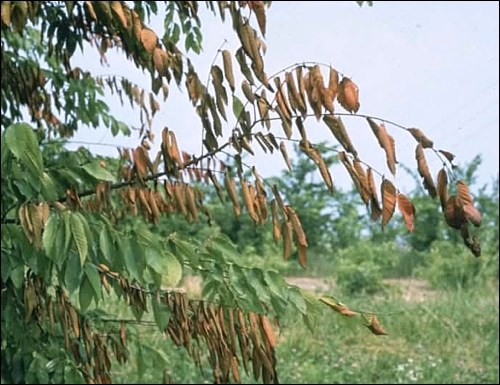A large number of prairie towns and cities have urban forests that are made up of street or boulevard trees and park trees. What distinguishes an urban forest from a forest, is that an urban forest is made up of planted trees (both publicly owned and privately owned) and natural forests are not.
Tree Canada says the benefits of an urban forest can include:
• Sequestering of gaseous air pollutants and particulates;
• Energy conservation through transpirational cooling, shade and wind reduction;
• Storm-water attenuation;
• Noise buffering;
• Provision of wildlife habitat;
• Increased property value;
• Improved aesthetics; and
• Psychological well-being.
Several decades ago municipal parks workers, gardeners and urban foresters began greening our young prairie communities by planting trees. You have to give these people credit for their foresight because one does not plant a tree for today but for tomorrow and the future beyond.
In those days, urban forestry was new and, like so many things in our societal development, the best decisions were arrived upon using the information available at the time. Consequently, the value of planting a diverse urban forest comprised of as many species of trees as possible was not, generally, considered.
Urban forestry on the prairies had the additional challenge of dealing with a brutal winter climate that limited the species of trees available to use due to hardiness. Our growing zone in the Battlefords is considered Growing Zone 2b - 3a. Growing zones in Canada range from 9a in the Vancouver area to 0a in the arctic. These zones are based on plant hardiness and minimum temperature tolerated. The Battlefords is much closer in growing zones to igloos than it is to palm trees.
Life on the prairies is tough on people and tough on trees. The tree species selected for prairie urban forest planting, back in the day, consisted for the most part of American elm, Manitoba maple and Green ash. With good reason. Many decades later, urban foresters deal with the problems associated with, not only an aging urban forest, but an urban forest that is not very diverse in its makeup. The issue with this is, that if North Battleford’s urban forest has an elm population of 30 per cent of its total tree population, and there is a Dutch elm disease outbreak, the potential to lose 30 per cent of the City’s urban forest, shade canopy and aesthetic qualities becomes a reality. It would be a completely different place with a completely different feel and look.
Dutch elm disease affects both American and Siberian elms. It is a difficult-to-control fungal disease. The fungus grows within the wood and specifically in the water carrying vessels of the tree. If an elm gets the disease, the fungus plugs off the water carrying parts of the tree and the leaves in the upper portion of the tree begin to wilt. The main vector (carrier) of Dutch elm disease is a tiny bark beetle that feeds on elms. The feeding does no damage however if the beetle first feeds on a diseased tree and then moves on to healthy tree the beetle can infect the healthy tree.
The following is from STOPDED (Society to Prevent Dutch Elm Disease, in Alberta) with colour commentary by Keith. Used with permission.
Elm Firewood can be deadly! Please do not transport or store. Keith - Elm bark beetles breed in dead and dying wood. If you bring firewood back from a camping trip in a DED infested area, you could be bringing DED vectors (carriers) with you.
It may seem hard to believe, but it’s true. Just one piece of elm firewood in the trunk of your car, or stored in your back yard could cause the death of the elm trees in a community.
Transportation of elm firewood is a common way to spread Dutch elm disease (DED). The elm bark beetles that carry the DED fungus can be hiding under the bark where you can’t see them. Stored elm wood is a perfect breeding site for these beetles.
The Society to Prevent Dutch Elm Disease (STOPDED) monitors annually for elm bark beetles using pheromone baited sticky traps throughout the province in municipalities, provincial parks and at Alberta/Montana border crossings. In the last years, beetle numbers have not only increased but the number of municipalities finding beetles is also increasing. For this reason we all need to be even more vigilant in following the DED prevention measures. Keith – The Saskatchewan government also has a beetle-trapping program as well.
Do not transport or store elm firewood at any time. Dispose of all elm wood by burning or burying immediately. Keith – There are provincial regulations in Saskatchewan that makes it illegal to transport or store elm wood.
Do not prune elm trees between April 1 and Aug. 31. Fresh pruning cuts can attract the beetles that spread DED and increase the chance of an infection on a healthy elm tree. Keith – This is also in the regulations.
All municipalities, counties and municipal districts in the province of Alberta have the responsibility and authority to prevent and control DED under the Alberta Agricultural Pests Act. Keith – The Saskatchewan regulations form a portion of The Forest Resources Management Act
To report a DED suspect elm tree or for more information, call the STOPDED hotline at 1-877-837-ELMS or check out the web site at www.stopded.org. Keith – in North Battleford the first contact is the City Parks Department. If they suspect your elm has Dutch elm disease, they will sample it and send the sample to the Crop Protection Laboratory of the Department of Agriculture, Food and Rural Revitalization for Saskatchewan, in Regina to determine if the disease is present. The City needs to protect and preserve its inventory of elm trees
Thank you to Janet Feddes-Calpas, STOPDED executive director for information and assistance with this article.




